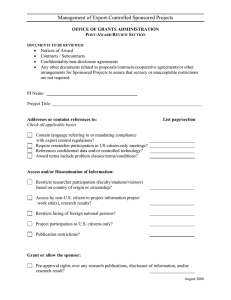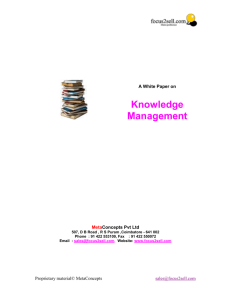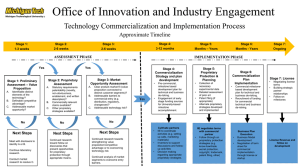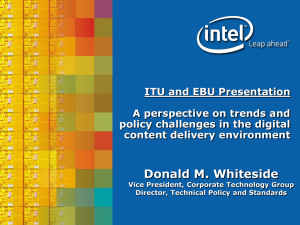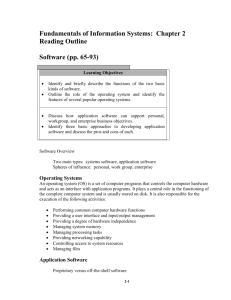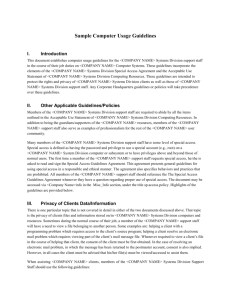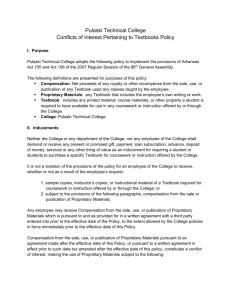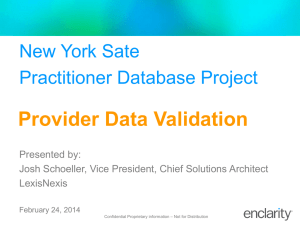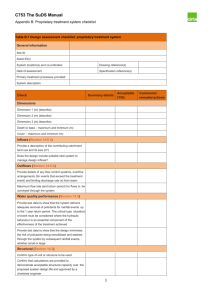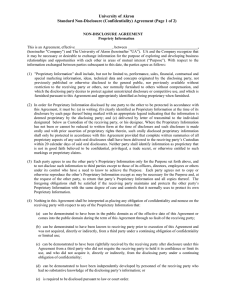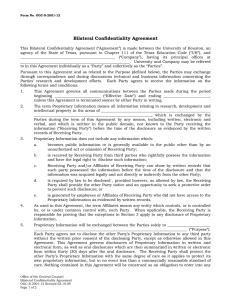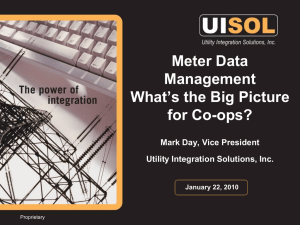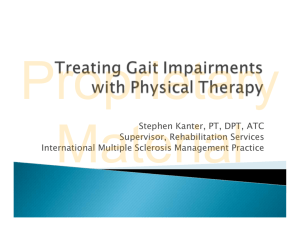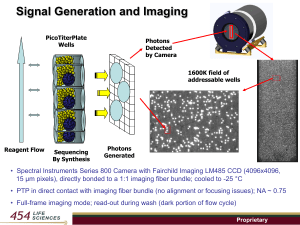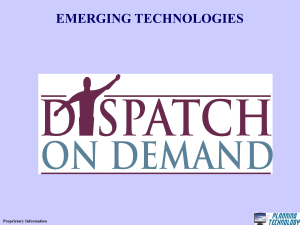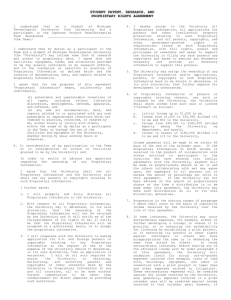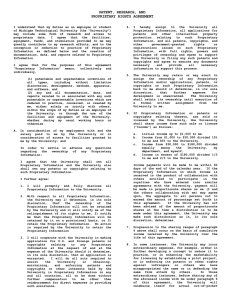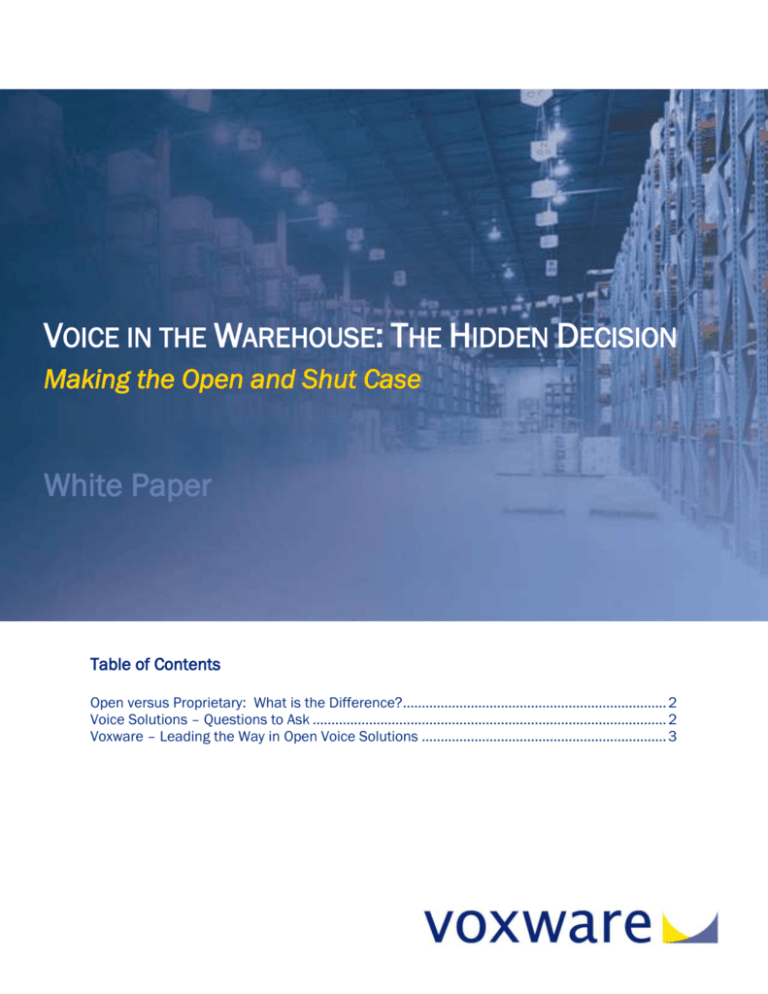
VOICE IN THE WAREHOUSE: THE HIDDEN DECISION
Making the Open and Shut Case
White Paper
Table of Contents
Open versus Proprietary: What is the Difference?...................................................................... 2
Voice Solutions – Questions to Ask .............................................................................................. 2
Voxware – Leading the Way in Open Voice Solutions ................................................................. 3
The business value of voice technology is now wellestablished. Warehouses that rely on manual
handling of products, such as case- and eachpicking operations, and those with demanding
physical environments like chilled and frozen
areas, can realize significant savings in cost
through the implementation of voice-directed
logistics.
But in a rush to cash in on these benefits, many
organizations have implemented voice systems
that carry with them the seeds of downstream
trouble. This only becomes evident when changes
to the operation or the supporting infrastructure
are needed.
Executives who evaluate voice solutions may not
realize it, but when they select a voice system they
are also making a major “hidden” decision. It is a
decision that strongly impacts future flexibility and
cost. It is the decision between an open versus a
proprietary voice solution.
Voice solutions improve worker productivity and
accuracy. They operate through the use of
wearable computers and headsets, employing a
“running dialogue” with the worker as tasks are
performed. At their core is a voice recognizer, and
software applications that use the recognizer to
interact with the worker on the floor and the
WMS/ERP system in the background.
Viewed from a distance, then, all voice systems
work in a similar fashion and deliver similar
results. Proprietary and open solutions look the
same as they operate. But just like an iceberg and
just as dangerous, there are big differences under
the surface. For instance:
Your DC operations change, necessitating a
change to your voice software. Who makes
the change? How much does it cost? How
long does it take?
What happens when the time comes to
refresh your voice units and move to the
next generation of client hardware
technology? How many choices do you
have? What does a lack of choice imply in
regard to cost?
© 2006 Voxware, Inc. All rights reserved world-wide.
You upgrade to the next release of your
WMS. Is the voice solution upgraded as
well, without a long and costly programming
project?
The answers to these questions, and others like
them will vary substantially if you are stuck with a
proprietary solution.
Open versus Proprietary: What is
the Difference?
Proprietary systems have been around for a long
time, in many areas of technology including voice
recognition. They abound when a technology is
new, but over time they fade from view as the
mass market begins to demand openness and
flexibility.
In essence, a proprietary product has a closed
architecture that restricts customer choice. Lack
of choice leads to higher hardware prices over
time, and a higher cost to upgrade and maintain
the software solution.
In contrast, open systems are based upon
commonly available, internationally recognized
standards. Vendors support these standards,
creating a more competitive environment that
drives down cost. Software upgrades are done far
more quickly and inexpensively because the pool
of developers who can work with the technology is
greatly expanded. The business result is that
organizations can be more agile in their logistics
operations and enjoy lower TCO (total cost of
ownership) if they choose open rather than
proprietary solutions.
Voice Solutions – Questions to Ask
As noted, voice solutions look the same when you
see them in operation. How can you avoid falling
into the trap of a proprietary system? Here are
some questions to ask:
106757924
Page 2 of 3
Does the solution use VoiceXML, which is
the de facto standard for modern voice
applications? If not, then you have a
proprietary system that must be
programmed at a very low level.
Are web-based standards used by the
product? Does the client software operate
within a browser and is the application
delivered to the unit as web pages over
HTTP? If not, then your organization will not
be able to leverage mainstream Internet
standards for flexibility and scalability.
Is the product written in Java? If not, then it
employs an older programming language like
C which is harder to maintain and was not
designed for modern web-based
environments.
Can the voice solution be configured without
programming? If not, then you will need to
pay for custom programming projects (and
wait) in order to get new or updated
functionality.
Can the solution run on a variety of devices
from major hardware vendors, without
changing any software programs? If not,
then your flexibility of real choice is
restricted, and costs will escalate.
We pioneered the use of VoiceXML for
warehousing voice solutions. Our VoxBrowser was
the first product to integrate mainstream Internet
standards with wearable computers for warehouse
workers. With VoiceLogistics Pro, solution
providers can now configure voice applications
instead of programming them. These applications
operate within the modern technology stack that
CIOs want: service-oriented, component-based,
and loosely-coupled for maximum adaptability at
the lowest cost.
Voxware’s leadership has been recognized by
major equipment manufacturers like Symbol and
LXE, who have delivered standard Windows CE
platforms that support VoxBrowser, thus giving our
customers choice for today and flexibility for
tomorrow.
Want to learn more? Contact Voxware and we’ll
show you how to avoid one of the most expensive
– yet hidden – decisions organizations can make
when implementing voice technology.
These questions show why businesses eventually
demand open solutions from technology suppliers.
Proprietary voice systems carry a big “vendor lockin” price tag. Open voice solutions provide
freedom of choice and flexibility for the future –
while still providing the essential benefits of
productivity and accuracy promised by voice
technology in the first place.
Voxware – Leading the Way in Open
Voice Solutions
Open and flexible voice technology is all about the
software. Voxware is proud of its record of using
open standards to deliver voice solutions for more
than six years.
© 2006 Voxware, Inc. All rights reserved world-wide.
106757924
Page 3 of 3

